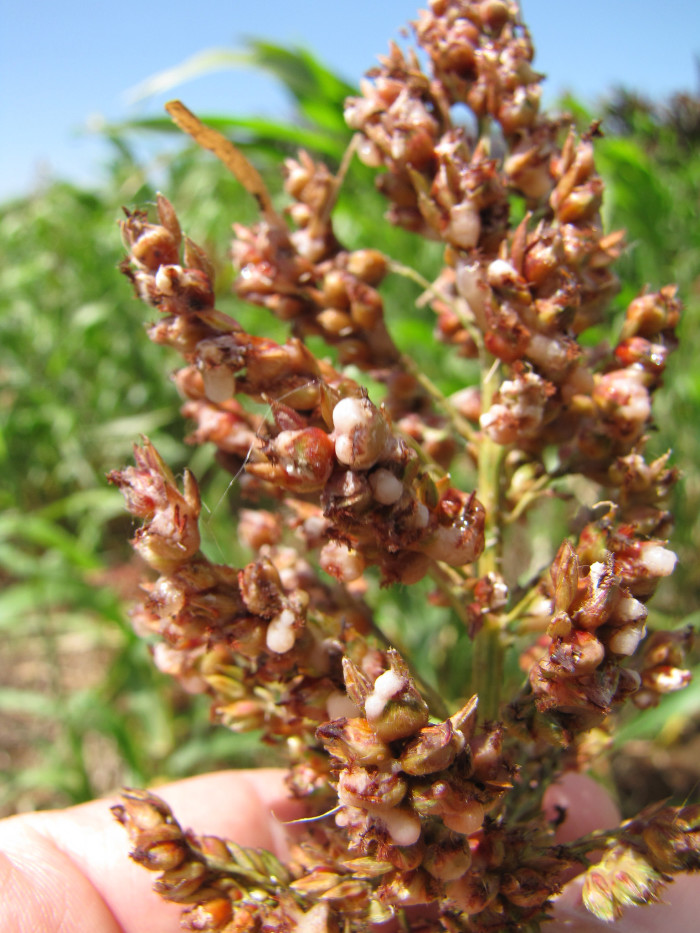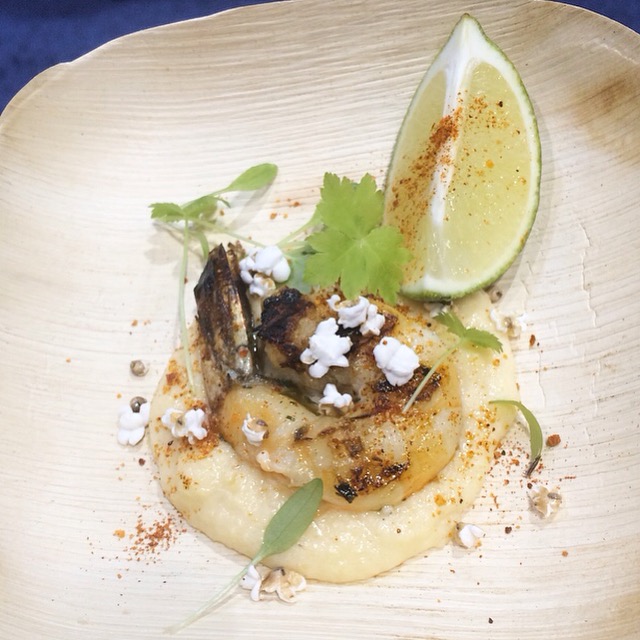Why You Should Be Cooking With Sorghum
As ancient grains gain in popularity, some lesser-known varieties are getting some much-deserved love. Namely, sorghum: the fifth most important cereal crop in the world. The reason it's so essential can be traced to the plant's natural drought tolerance and versatility as feed and fuel — plus, it's gluten-free. The latter aspect may be responsible for the growing use of sorghum by chefs such as Marc Forgione, Thomas Keller and Michelle Bernstein. It's not just used as a starch base; chefs also have put the grain in desserts, turned it into flour for baking and used it as a garnish. Look for sorghum at your local natural grocery store or farmers' market come early fall.
Where it’s from
This ancient grain was domesticated in Africa more than 8,000 years ago and is thought to have been first harvested in Ethiopia, Sudan and Egypt. It's still a prominent cereal grain on the continent, as well as in India, where sorghum was imported during the first millennium B.C. "Sorghum" was derived from the word "sorgi," as it's known in the East Indies, and the moniker first appeared in botanical literature in 1542. As the grain made the rounds through the silk trade routes, it found a place on ships traveling with slaves from Africa to the Americas in the 19th century. In the United States, farmers took to sorghum because it thrived in arid lands where corn and other popular grains couldn't grow. Now it's found all over the world, though in North America most consumption of sorghum is done by livestock.
This ancient grain is endlessly versatile. For example, in the 1700s Benjamin Franklin introduced the grain as "broomcorn," a plant used to make brooms. The Chinese ferment sorghum to make the liquor Maotai, a type of baijiu (rice wine) created in the town of Maotai in the Guizhou province. You can also find sorghum in some papermaking processes, and some ethanol is created not from corn but from this grain.
When it’s in season
In the United States, the "sorghum belt" stretches from South Dakota to southern Texas. The grain is harvested from September through October, much like other cereals. You can find it fresh and in bags lining farmer' market stalls then, or buy it anytime of year dried or as a flour.
What to look for
You can find sorghum in a rainbow of colors: pale yellow, deep red, brown, purple, white and bronze. Unlike other grains, sorghum's hull is edible, so when shopping for it, make sure you get the whole package. After all, the main nutrients and antioxidants are found in the outer layers, making it one of the healthiest cereals out there. Plus, there is a thin, wax-like substance surrounding the grain that contains policosanols, compounds that are thought to benefit heart health.
Some farms also grow what is known as sweet sorghum. This plant is used for its stock and is made into sorghum syrup. Unlike the regular cereal, sweet sorghum's grain head remains small, which is one reason only the stocks are harvested.
How to store it
If you have sorghum flour, treat it like other flours by keeping it in an airtight, bug-proof container, preferably in a dark cupboard. Dried grains should be looked after in a similar way.
How to prepare it
One cool thing about this grain is the way it soaks up just about any flavor you give, kind of like tofu and chicken do. You can also use the pulverized cereal as a flour substitute — a great option for those who deal with gluten allergies. But maybe the most fun way to eat sorghum is to pop the grains like corn. This gives it a toasty flavor and a fun texture that melts in your mouth.
At Cena by Michy in Miami, chef Michelle Bernstein uses sorghum in just about anything, from grain salads to risotto to soups, and as an alternative to macaroni and cheese. "It has a lot of texture, holds up well to heating and reheating, and is very toothsome and filling," she says, adding that it's also hard to overcook. "Just don't undercook it. Other than that, have fun with it — there is no limit."
Tom Kaplan, owner of Hugo's in Los Angeles, suggests boiling the whole grain until you think it's done, then "add at least 10 more minutes. Let it get really soft, and it will firm up when it cools; if you don't, it gets unpleasantly al dente." Kaplan, in his right, has become somewhat of a sorghum expert — most of the rice on his California eatery's menu has been replaced by sorghum.
"We wanted a new, super-nutritious burrito for those who like endurance training," he says, adding that the water tables of big rice-producing regions like California and India were critically low, so for environmental reasons he didn't like to use rice. "While investigating other grain choices, sorghum popped up, and with all of its nutritional values, antioxidants, anti-inflammatory qualities, low glycemic index and the fact that our chef was so familiar with it, we ordered a ton." Now the eatery is on its second literal ton, and the popularity of sorghum at the restaurant continues to pick up.
Chef Marc Forgione is also a fan and has included it in many ways at his restaurants. "I've actually used a bunch of different varieties of sorghum, including the popped sorghum and flour, but our salad at Lobster Press [in New York City] features seasonal vegetables and greens with cooked pearled sorghum," says Forgione. "The closest thing I can compare it to is heirloom farro; it's got a great, earthy bite to it, and if you cook it risotto style, it will have a nice chew to it."
The chef recommends experimenting with both the whole grain and the popped sorghum. Try making it risotto style and marvel in the al dente bite it provides, or try the popped version as a garnish and to add texture to a dish. There are so many easy ways to incorporate the ancient grain, it's amazing more people haven't caught on.
Chef Marc Forgione's Sorghum "Popcorn" Shrimp
4 Servings
Ingredients for shrimp:
For grits:
For garnish:
Directions:For the shrimp:
For the grits:
To finish:




